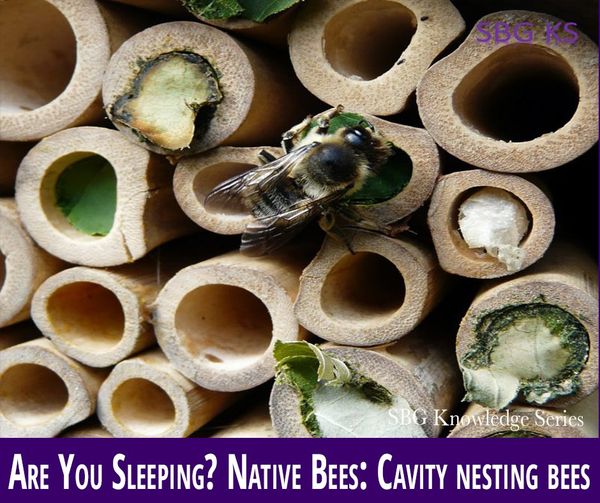When laying eggs, the female bee makes use of an interesting super-power that some human parents might envy: She is able to decide whether to lay a male or a female egg. Usually, she will choose to lay female eggs first, and will place the males closest to the entrance. That way, when the new bees begin to emerge in the spring, any predators that are lurking will seize upon the males first-- hopefully allowing the females to escape unscathed! (Sorry, guys.)
How can you help these industrious insects to survive the winter? First, leave your pollinator garden clean-up for the spring. Allowing plant stems to stand through the winter provides important overwintering sites for cavity nesters. A brush pile or pile of logs in an inconspicuous spot also offers plenty of shelter. As you look out at the cold, snowy landscape, you can bask in the warm glow of the knowledge that you’ve provided snug winter homes for many pollinator friends!
Author: Lisa Schneider
Photo credit: Habitat Network


 RSS Feed
RSS Feed